


Doing a full-body workout is one of the best ways to hit all the muscle groups, especially if you are a busy working professional with limited time. Furthermore, it doesn’t matter whether you’re a beginner or a fitness expert! There are always full-body workout routines out there that cater to different fitness levels.
Discover the benefits of doing full-body workouts, types of exercises, and a sample full-body routine in this article.
What is a Full-Body Workout?

A full-body workout is a type of workout that targets all the major muscle groups in a single session. It can be done at any age and fitness level, making it great for improving overall fitness, strength, and cardiovascular health.
Types of Full Body Workout
Under full-body workouts, there are different types of options that you can do based on your fitness level, goals and preferences. You don’t have to do circuit training or intense workouts to hit all the muscle groups.
Here are some of the common types of full body workout:
- Circuit Training: Circuit training usually involves a series of exercises performed consecutively with minimal rest in between each set. It engages multiple muscle groups and keeps the heart rate up.
- High-Intensity Interval Training (HIIT): HIIT workouts consist of alternating between periods of intense exercise and brief recovery. This workout is one of the more efficient ways of burning calories.
- Bodyweight Training: Bodyweight training is pretty much in its name. It requires using your body weight as a form of resistance to your routine. It can be done anywhere with no equipment.
- Resistance Training: Resistance training, also known as strength training, it involves exercises that improve muscle strength and endurance by working against a force.
- Functional Training: Functional training is a type of workout that focuses on exercises that are similar to activities performed in daily life such as bending, lifting, pushing, or pulling.
- Yoga or Pilates: Although these are typically low-impact exercises, they can still target the whole body, depending on the sequences that you follow.
Benefits of Doing Full Body Workout
Aside from it being a convenient option for those with little time, you might wonder, ‘Why full body workout?’. Well, the truth is that full body workout offers a lot more than just convenience. Here are some of the benefits:
Burns more calories
One of the greatest benefits of full-body workouts is that they allow you to burn more calories in less time. A win-win situation.
Full-body workouts typically combine plenty of compound exercises, working multiple muscle groups at a time. Doing so forces your body to work harder to increase blood flow to your muscles [1]. Thus, increasing calorie burn. If you’re looking to lose fat, full-body workouts are the way to go.
Helps to grow muscles
While training splits are the best for muscle hypertrophy, doing this type of workout can still be effective for muscle growth.
A study done in 2021 found that there was no significant difference in the increase of maximal strength and muscle thickness between a split-body workout routine and a full-body workout routine. Thus, showing that it is possible for full-body training to be effective.
Supports fat loss
Another benefit is that it is ideal for fat loss. Following a workout routine would likely mean that you can expect to work out the same muscle groups, at least twice a week. Engaging the muscles simultaneously along with doing it frequently, helps to boost calorie burn and enhance your resting metabolism. Ultimately helping you to lose unwanted fats.
Improves muscle recovery
Following a training split may make it harder for your muscles to recover compared to a full-body workout. This is because you may be unknowingly working the secondary muscles despite focusing on a different body part the day before.
On the flip side, if you were to exercise the whole body in one session, you can extend the amount of rest day. This will give you a longer recovery time for your muscles.
It can be done at home
Do you hate going to the gym? Or maybe you just can’t afford to spend on a gym membership? That’s perfectly fine! The great part about full-body workouts is that they are rather versatile, there are plenty of bodyweight exercises that you can do.
Components of a Full Body Workout
For it to be an effective full-body workout, you should consider having these components:
- Warm-up: To prepare the body for exercise, improve blood flow to the muscles and prevent unwanted injuries.
- Compound exercises: Having compound exercises will allow you to engage multiple muscle groups at once, maximizing efficiency and calorie burn.
- Isolation exercises: Target specific muscle groups to correct any muscle imbalance and ensure that are are well-developed.
- Cardio exercises: Including cardio exercises will help you to improve cardiovascular health and increase calorie burn.
- Cool down: Having a cool down session after your workout is important for muscle recovery and to return your breathing and heart rate to normal.
5 Best Exercises For Full Body Burn
1. Burpees
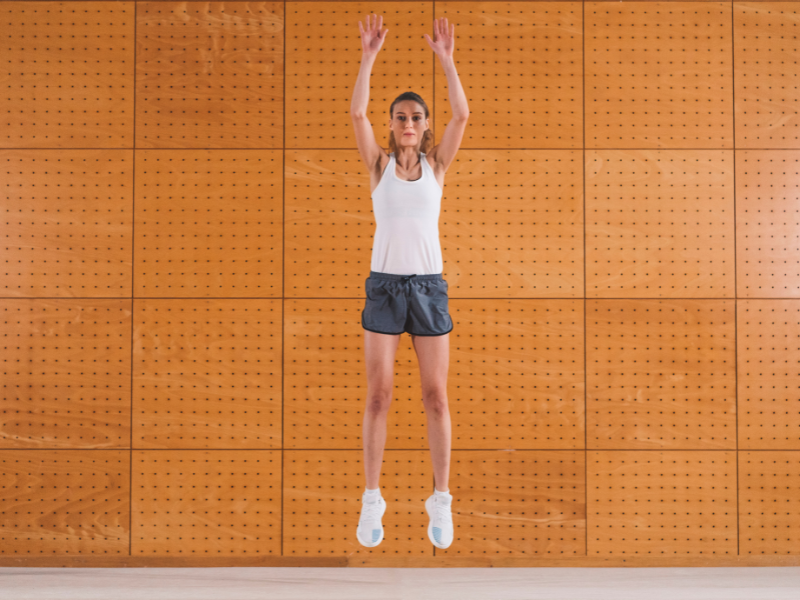
Burpees are one of the best exercises for a full-body workout. It combines both cardio and strength training, helping you to burn both calories and fats.
How to do it:
- Start by being in a standing position. Get into a squat by having your knees bent, back straight and feet shoulder-width apart.
- Lower your hands to the floor, placing it in front of you.
- Shift your weight to your hands as you jump back into a plank position.
- From here, you may opt to do a single push-up.
- Otherwise, jump back to the initial starting position with your feet close to the back of your hands.
- Stand back up. This is counted as one repetition.
- Repeat as many times as you can.
2. Kettlebell Swings
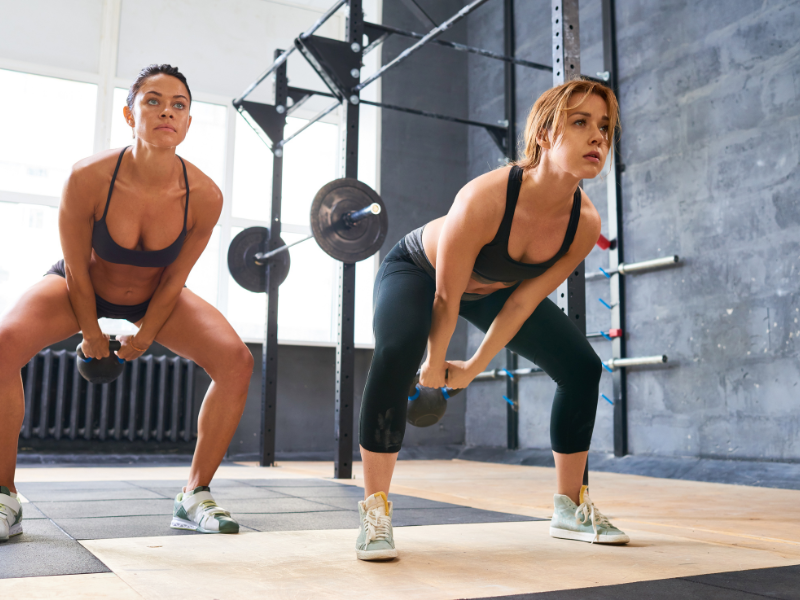
Kettlebell swings make a good addition to any full-body workout plan that you may have. It is a high-intensity yet low-impact exercise that works both the upper body and lower body. It is highly effective in helping you to improve cardiovascular strength and power.
How to do it:
- Stand with your feet shoulder-width apart. Hold on to a kettlebell with both hands, palms facing towards you and your arms straight.
- Hinge your hips, bending your knees slightly so that the kettlebell is in between your legs.
- Ensure that your back is straight and core-engaged.
- From this position, push your hips back up so that your body is in a standing position. At the same time, allow your kettlebell to swing forward, as far as it can go.
- Ensure that your kettlebell doesn’t swing beyond shoulder height.
- Return to the starting position by lowering the kettlebell back down. Hinge at the hip and slightly bend your knees.
3. Deadlifts
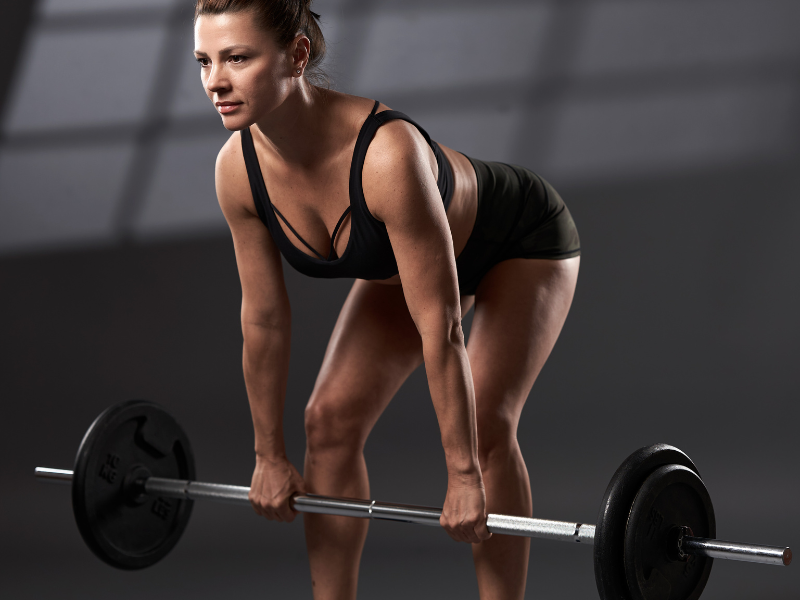
Deadlifts are great for working the lower body. It helps you to build stronger legs and butt as you mainly use the leg muscles and hip to lift the barbell or dumbbells.
How to do it:
- Choose between a barbell or two dumbbells. If you are using a barbell, grasp onto the bar in an overhand grip, just slightly wider than the line of your knees.
- Otherwise, grasp onto the dumbbells in both hands.
- Start with your feet shoulder-width apart, with your toes positioned underneath the bar. Your feet should be pointing straight or slightly outwards.
- Lift the bar or dumbbells, and ensure that your arms are straight.
- Engage your core muscles as you hinge at the hip, gradually bringing the weight down towards your shins. Keep the bar or dumbbell close to your shins as you perform this movement.
- Lift the weights back up to the starting position. Repeat as many times as desired.
4. Bicycle Crunches
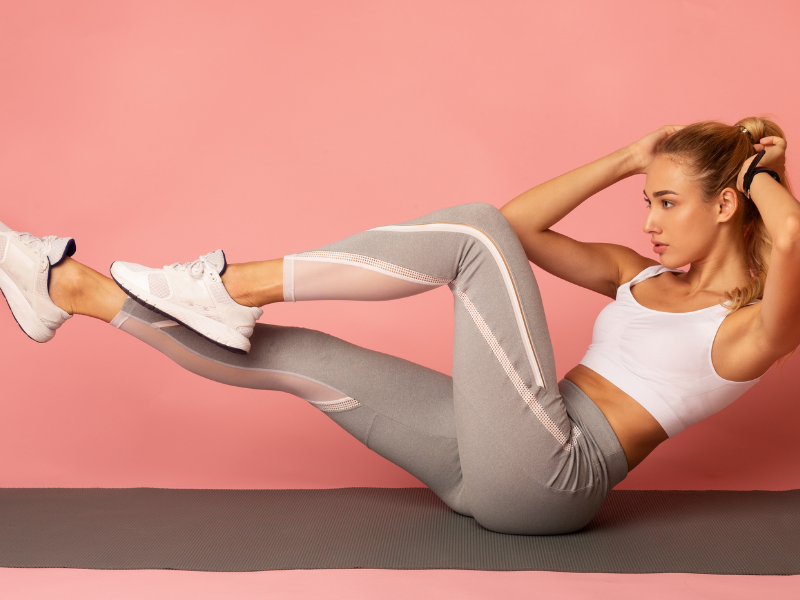
Bicycle crunches are considered well-rounded exercises that target your entire core. It works on three major muscle groups, mainly the obliques, upper abs, and deep abs muscles.
How to do it:
- Start by lying with your back against the ground.
- Keep the knees bent and your head slightly.
- Place your hands behind the back of your head. Ensure that you are not using your hands to pull your head or neck up.
- Raise your left leg up and extend it out.
- Lift your right leg up and keep the knee bent.
- As you bring the knee towards your chest, bring your left elbow towards the knee in a twisting motion.
- Lower your elbow and knee at the same time and perform this movement on the other side.
- Keep alternating, repeating this movement until you reached your desired repetitions.
5. Mountain Climbers
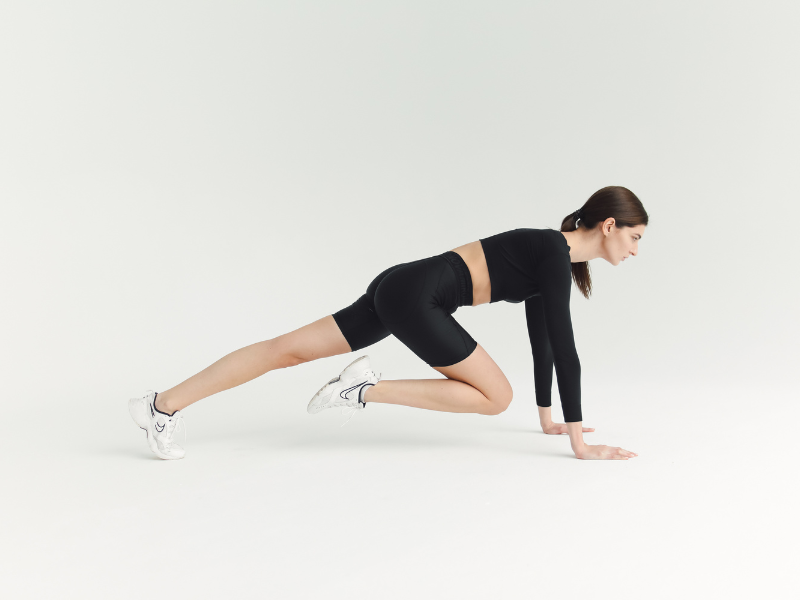
Mountain climbers are great to include in your workout routine as they work your entire body and raise your heart rate. It is great for both beginners and those who are experienced.
How to do it:
- Start by getting into a plank position with your hands placed directly under your shoulders.
- Engage your core and bring one knee up towards your chest.
- Quickly switch to the other leg by jumping and extending the other knee.
- You should maintain a rapid, alternating movement by keeping the hips low and back straight.
3 Full Body Workout Plans To Try
If you are looking for a full-body workout plan or video to follow, we have some options on our website for you to try. Here are 3 options for you.
17-Minute Full Body Transformation
Check out a 5-day workout plan that targets your whole body. All you need is just between 15-20 minutes each day to complete this entire routine.
Full Body Workout for Beginners
Full Body Chair Workout
4 Workout and Nutrition Tips
To fully optimize your workout routine, you want to ensure that you are following a few key tips. Here are 4 workout and nutrition tips that may be beneficial for any workout routines that you do.
1. Prioritize compound exercises
Compound exercises are great because they work more than one muscle group at a time. It can help you to build muscle mass and burn calories in a shorter amount of time. After all, if you could choose to work your entire body more efficiently, why shouldn’t you?
2. Focus on a balanced nutrition
One of the most important tips but easily neglected is the focus on consuming a balanced diet. According to the American Heart Association (AHA), you should be consuming healthy foods before, during, and after workouts [2].
Doing so helps you to maintain blood glucose concentration, maximize your workout performance, and improve recovery time. Before each workout, you should consume healthy carbohydrates (e.g. whole grains, whole wheat, fruits or vegetables) and avoid foods that are high in saturated fats.
After workouts, you should focus on eating more carbohydrates and protein. As you exercise, you are burning a lot of carbohydrates. So, eating these foods will help you to recover and repair the muscles faster.
3. Start light and progress gradually
A common mistake that many people tend to make is starting heavy too quickly. This is something that you want to make sure to avoid. You don’t want to end up pulling or straining a muscle!
Instead, take it slow and light if you are just beginning your fitness journey. This not only gives your body time to adapt to the workout, it will also help you to recover quicker.
Once comfortable, you can increase the intensity gradually, progressively becoming stronger.
4. Give yourself time to rest and recover
Never push yourself beyond your limits! There’s a common saying which is to ‘push yourself to the point of failure’. It makes sense to a certain extent. Pushing yourself harder is normally when you’ll be able to witness growth.
The problem only comes when you don’t know what your limits are and push yourself beyond that. This increases the risk of injury, impeding recovery.
Always listen to your body and know when it is time to stop. Giving yourself time to rest and recover is the best way to improve yourself.
Conclusion
All in all, full-body workouts are undoubtedly one of the best workouts that you can do. It is perfect for those who are busy and always on the go, as well as stay-at-home moms or even college students. By incorporating multiple compound exercises that target multiple muscle groups, you can maximize your time while achieving incredible results!
If you are looking for a personalized full-body workout program, try out the JustFit app. With the app, you can customize your workouts based on your fitness goals and achieve the results you want. Try it now, free for 7 days!
More Resources
Spartacus Workout PDF: Best Workouts and Workout Plan
P90X Workout Sheets: Free And Printable!
What is the best overall full-body workout?
Is it OK to do full body every workout?
Is 5 exercises enough for a full body?
How many full-body workouts a week?
American Heart Association (2024) Food as Fuel Before, During and After Workouts [online]. Available at: https://www.heart.org/en/healthy-living/healthy-eating/eat-smart/nutrition-basics/food-as-fuel-before-during-and-after-workouts Crewther, B. T., Heke, T., & Keogh, J. (2016). The effects of two equal-volume training protocols upon strength, body composition and salivary hormones in male rugby union players. Biology of sport, 33(2), 111–116. Available at: https://doi.org/10.5604/20831862.1196511 Del Turco, L. (2020) If You Want to Lose Body Fat While Strength Training, This Is the Place to Start [online]. Available at: https://www.livestrong.com/article/13723630-compound-exercises-fat-loss/





